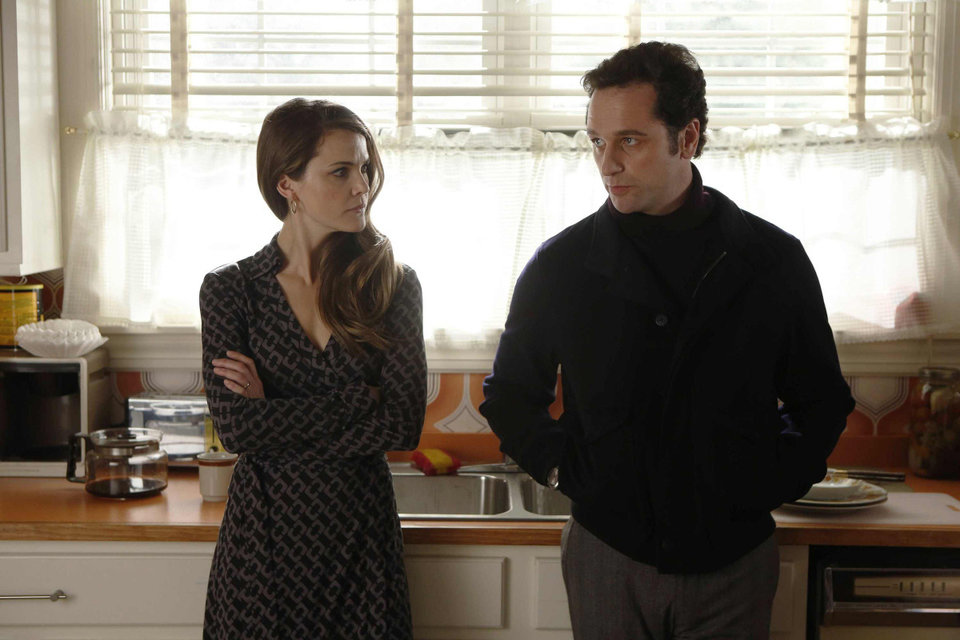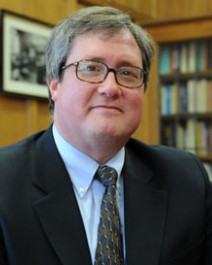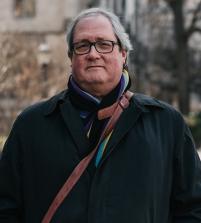Victorianism in Postmodernity?
Ed
Ed. Note: This column contains some spoilers for FX’s recently completed series The Americans.
 The word “Victorian” can conjure, or be used to conjure, a variety of associations: order and decorum, inhibition, an emphatic moral code inevitably at odds with private behavior. As a historical period designating the reign of Queen Victoria (1832-1901), the Victorian “Age” or “Era” was also when the serial novel fully emerged as a coordinated practice involving publishers, authors, and a reading public. Arguably its high priest was Charles Dickens, whose The Pickwick Papers was published in monthly installments between March 1836 and November 1837. With his introduction of the hilariously epigrammatic Sam Weller in its tenth installment, Dickens had created a public ritual in which his readers awaited with great expectation the next performance of the grand narrative—a practice the author would repeat, most notably in The Old Curiosity Shop (1840-41) and David Copperfield (1849-50).
The word “Victorian” can conjure, or be used to conjure, a variety of associations: order and decorum, inhibition, an emphatic moral code inevitably at odds with private behavior. As a historical period designating the reign of Queen Victoria (1832-1901), the Victorian “Age” or “Era” was also when the serial novel fully emerged as a coordinated practice involving publishers, authors, and a reading public. Arguably its high priest was Charles Dickens, whose The Pickwick Papers was published in monthly installments between March 1836 and November 1837. With his introduction of the hilariously epigrammatic Sam Weller in its tenth installment, Dickens had created a public ritual in which his readers awaited with great expectation the next performance of the grand narrative—a practice the author would repeat, most notably in The Old Curiosity Shop (1840-41) and David Copperfield (1849-50).
Dickens wrote to the specific demands of the form in at least two respects: he left his audience at the end of each installment with a new dilemma or mystery that would require resolution, eager to read what would happen next; and he plotted his narrative with sufficient ambiguities of character and action that its ultimate ending could—up to the final page, even the final paragraph—be either happy or sad. In a manner akin to call-and-response preaching, Dickens wrote with a keen sense of his readers’ responses to the installments as they appeared. Much of what we now call “Victorianism”—its composites of conviction with uncertainty, hope with fear, appearance with reality—is in some part available to us today thanks to Dickens’s serial novels. Taking modest liberty with Robert Bellah’s formulation about America, it is not too much to say that, to the degree that Victorianism was England’s civil religion, novelists like Dickens were, next to Her Majesty, its chief articulators.
In the present moment a similarly broad set of associations attach to the word “postmodern.” Its common invocation belies the fact that its dates are less readily delimited than the actual reign of England’s monarch. That acknowledged, postmodernism has come—rightly and wrongly—to denominate a skepticism about received tradition and, with that skepticism, the exploration of new forms of culture—whether the practitioner is Damien Hirst or Jacques Derrida.
What might we make, then, of the manifest “sighting” in our current culture of long-form television, which so clearly assumes the form of the serial novel yet flourishes in a world that is designated, or at least lives with the heritage of, the “postmodern”? Allowing for an admittedly major difference—a much less patient public, one that readily embraces the immediate gratification of “binge watching” —do we have in such series as The Wire (which has the status in this medium that Dickens’s novels had for Victorian serials) a set of composites of what might be meant by our “postmodernity”? Might long-form television afford a key to our own age’s “civil religion”? And to what degree is our age Victorian, or postmodern, or both?
Much has been written about The Wire in this regard—all of it, unsurprisingly, hotly debated. Here I would call our attention to a more recent, to date less noted, but remarkably apt example: Joe Weisberg’s The Americans (2013-18), a narrative of the lives of two Russian spies working undercover as suburban travel agents in northern Virginia (within handy driving distance of Washington, D.C.). The series begins at the moment of Ronald Reagan’s inauguration on January 20, 1981, and goes on to depict 1980s American (and, to a lesser extent, world) culture—its music, its games, its religion—toward an effect of verisimilitude that, as someone who entered adulthood at that moment, I find eerily recognizable.
What is the 1980s Zeitgeist, at least according to The Americans? It is on the one hand resolutely Manichean: the story is one of Good versus Evil, translated here respectively (and resolutely) as the United States versus Russia. The story is speedily complicated, however, via skillful interspersion of President Reagan’s television appearances invoking “the Soviet threat” with instances of an equally stark sensibility (albeit inverted) on the part of the undercover agents so near at hand, and their counterparts (the extended cast includes members of the Russian embassy in Washington, and there are occasional flashbacks and contemporaneous scenes set in Russia). This bracing yet increasingly credible dualism gives rise to a series of parallel plots in which both the FBI and the KGB prove capable of disturbing, revolting, violence: murder, torture, and the use and abuse of sexuality equally serve both sides. The proclaimed division of ends masks a fundamental similarity of means. Each claims a higher purpose and blames the need for its mask on the other.
The Americans juxtaposes that common brutality with what it depicts as the seductive obliviousness of suburban life—its video games, its trips to the mall, its excitement over the emergent technology of the computer. Viewers must consider not so much whether but how the brute reality of violence in high-stakes international politics relies obliquely but inevitably on the cultivation of the appearance of normalcy.
The metonymy for the appearance and the reality is the married couple at the show’s center. Philip and Elizabeth (once Mischa and Nadezhda) are fluent in “American” and skillfully assimilate the appurtenances of suburban life; this affords them ample, if not always foolproof, cover for their subterfuge. What proves most disruptive to their work, however, is not the FBI agent who lives across the street (and who becomes Philip’s best friend) but their fifteen-year-old daughter Paige, who becomes disaffected from her family and suburbia and joins an evangelical church. Her conversion experience poses a dilemma to her parents that has as its immediate counterpart her simultaneous recruitment by her parents’ Soviet handlers, which emerges just as the church commences organized political protest against the Reagan administration’s policies in Central America. The ensuing plot twists are nothing less than Dickensian: a hardening of Elizabeth’s devotion to the Soviet cause; Philip’s ambivalence, for which he finds succor at est sessions; and last but hardly least, the shatteringly abrupt demise of Paige’s innocence.
The Americans displays affinities of sensibility with John Le Carre’s deep-seated skepticism about the rotten fruit of the Cold War mentality. Yet the show’s true progenitor is not (“postmodern”) Le Carre, but (“Victorian”) Dickens: in the way it attends seriously (from the vantage point of our own moment of cell phones and Facebook) to the rituals and pieties of 1980s American consumerism, it explores their connections to a range of new religious forms (suburban white evangelicalism, est). The Americans borrows from Dickens the sense that the divine worshipped by these characters is in the details—details played out privately at least as much as in church on Sunday morning.
In this respect The Americans most resembles Dickens’s Bleak House (1852-53), in which the chapter-by-chapter alternation of first-person and anonymous, third-person omniscient narrators show us the capacity of a “disinterested” agent—England’s legal system—endlessly to delay, and ultimately to wreak havoc with, human lives and the social order. The Americans calls its viewers back to a decade in recent American history that conjured willful antagonists who had vastly more in common with one another than their ideologies or proclaimed interests allowed even them to recognize. In at least this respect, it seems that the postmodern is Victorian. Or is it the Victorian that is postmodern?
Image: Keri Russell and Matthew Rhys star as Elizabeth and Philip Jennings in The Americans | Photo Credit: FX


 Richard A. Rosengarten (PhD’94) is Associate Professor of Religion, Literature, and Visual Culture at the University of Chicago Divinity School.
Richard A. Rosengarten (PhD’94) is Associate Professor of Religion, Literature, and Visual Culture at the University of Chicago Divinity School.